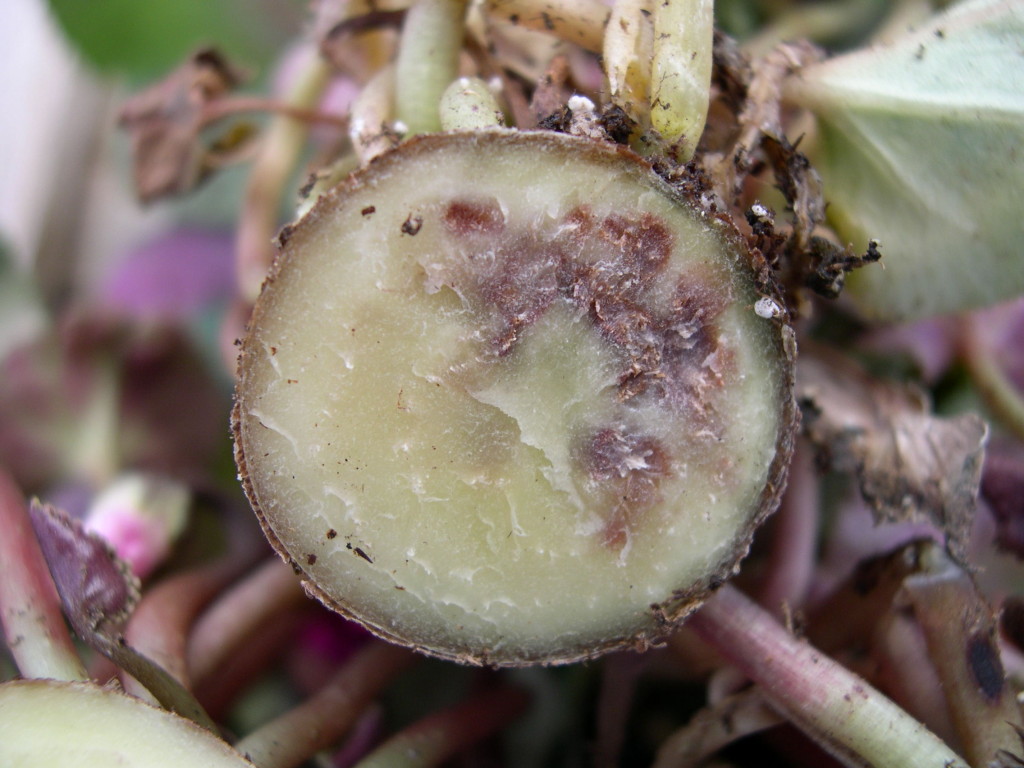
Disease Discussions: An Ounce of Prevention is Worth a Pound of Cure
ARC: I know most plant pathologists recommend preventive disease control and most growers practice “curative” programs. It’s just human nature to wait until evidence of a problem presents itself before acting. What are your most compelling reasons you use when trying to convince someone to anticipate and prevent rather than attempting to control a situation once it starts?
MLD:I generally let them stay as conservative as they wish to be with their sprays except when the potential disease is especially pernicious, such as with downy mildew of impatiens. In that case it is so very obvious that the disease is going to spread like wildfire, so the treatment has to be there in advance. Only if they have a guaranteed source of downy mildewfree impatiens can they grow without fungicides. Super-fast potential spread is one compelling reason to treat in advance. What else would you say is a good reason for preventive treatment?
ARC: I have been trying to think of something that would not benefit from a preventive approach. I am not just talking about chemical products here. For instance, biological control only really works when the grower can think ahead and apply the products preventively. That being said, I am not in favor of applying a lot of products without a good reason. In fact, there are many cases where applying the right product preventively can result in the best control and actually be far less costly in the long run. This is true in my experience with Fusarium diseases, which are among the most difficult to control. In this case, using healthy bulbs and cuttings is more important than any amount of any product applied.
MLD:Powdery mildew might be the only disease where a do-it-yourselfer wannabe plant pathologist can keep watching for early signs and only treat when they see some powdery mildew. But they need to know when to watch and what to watch. For example, they need to watch poinsettias like a hawk once the temperature gets below 85° F in the greenhouse. If they can’t scout carefully for powdery mildew, then they can’t detect it early at the beginning of an epidemic, and it will not be manageable. With calibrachoas and verbenas, they need to keep an eye on the lower leaves and look closely with a hand lens if the leaves are turning yellow or brown. How about root rots? Preventive or curative?
ARC: I think Pythium root rot can be cured, but I see plants outgrow it without benefit of fungicides when the grower improves the conditions significantly (less water, less fertilizer and maybe warmer, brighter conditions). Rhizoctonia can be stopped I think. Cylindrocladium root rot cannot be stopped even with fungicides. And black root rot even preventive fungicides won’t stop this one with the wrong potting medium pH. What do you think of Phytophthora? My experience is that once infected it’s a dead man walking.
MLD:Yes, I wouldn’t want to try to bring plants back from a Phytophthora attack. It’s hard to generate new roots when your stems are mush. Best to toss affected plants and go to protecting the rest. Fungicides can protect against Phytophthora beautifully, but not cure it. I don’t think it’s a good idea to treat for all possible diseases in advance, because they aren’t all equally likely to happen.
But if I were a calibrachoa grower, I’d treat for black root rot (Thielaviopsis) preventively, using thiophanate-methyl in rotation with triflumizole, fludioxonil or polyoxin-D that would be so much more satisfying than watching your crop sit, wilt and die rather than grow, flourish and sell! Even with Pythium, which, as you say, can be fought back against, prevention is smarter. Growers today don’t have time to coax roots back onto a crop.


 Video Library
Video Library 




















